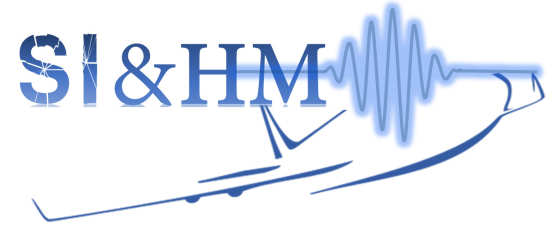Model-based algorithm:It involves modelling the dynamic response of the structure subjected to a known impact location. Measured responses of sensor output are compared with the estimated response from the model. This is achieved through modelling the wave propagation generated by impact via the equation of motion in plates and modelling the sensor response. Through an iterative procedure, transfer functions are developed to estimate the system response to an impact event and to locate the impact. Model based algorithms can be used to both locate an impact and to reconstruct the impact force history from the model response. One method to build a transfer function between the impact force and the sensor data is to take advantage of the convolution integral. The limitation of most model-based methods is that they are restricted to linear cases, which implies that the impact energy has to be small enough not to cause large deflections, see figures below.
However, aircraft panels are very likely to undergo large deflection when they are exposed to impacts during their service-life. Therefore, the drawback of model-based approaches is their application to complex structures.

